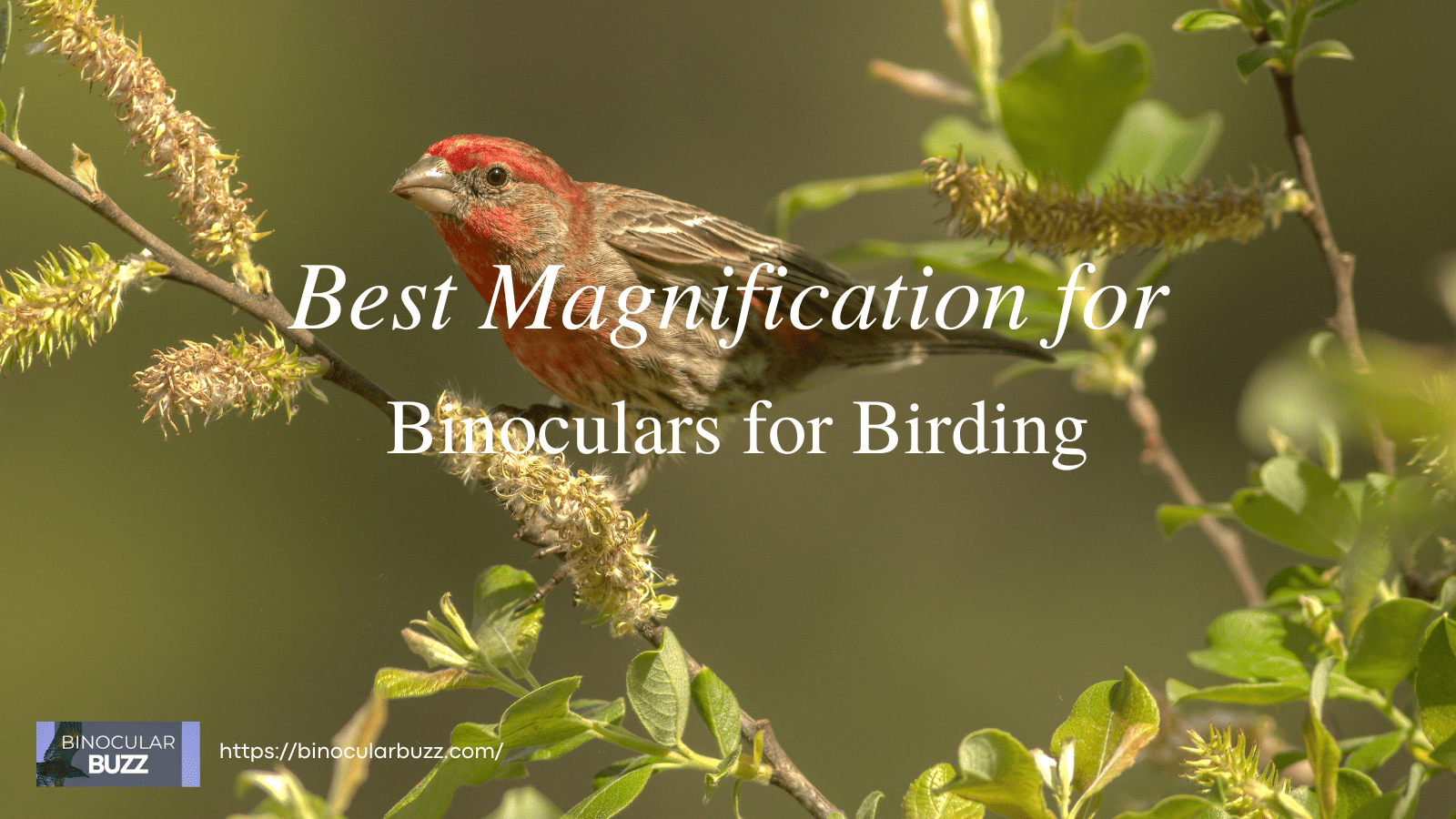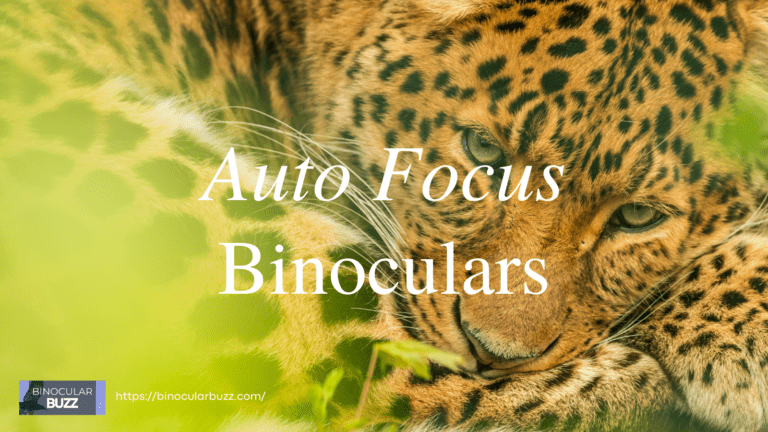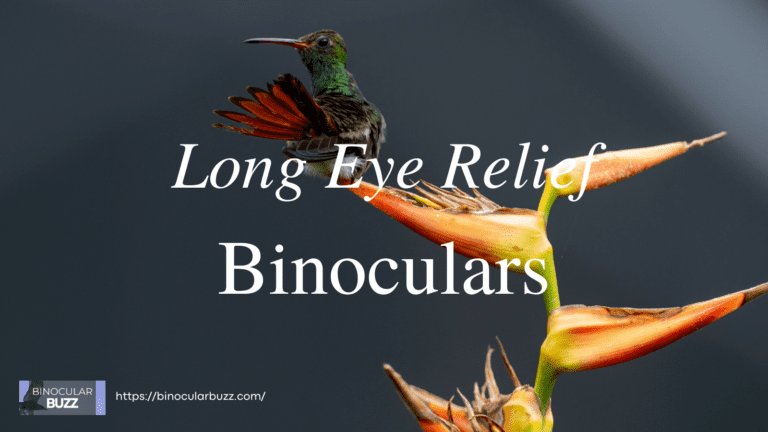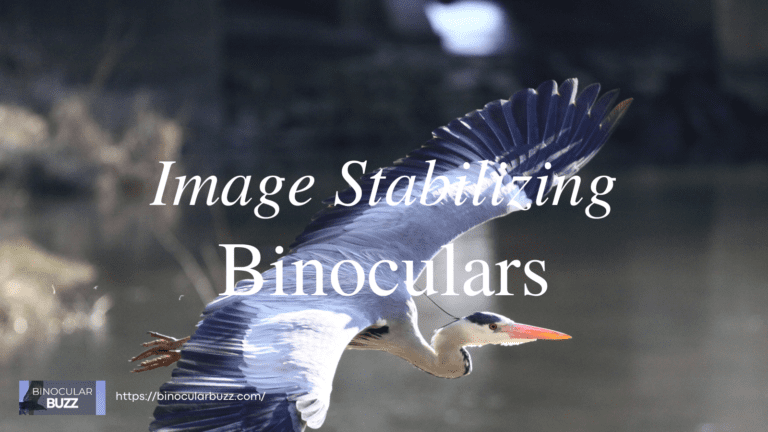Best Magnification for Binoculars for Birding: A Practical Guide [2024]
Excited about your new hobby of bird watching? Ready to buy your first binoculars? But what is the best magnification for binoculars for birding?
In case you don’t know then this article is just for you. The ideal magnification range for bird watching falls between 7x and 10x. But let me assure you that there is no simple answer. The best magnification for binoculars for bird watching can depend on a lot of factors.
And that is what I explain here. So read this article till the end before you buy your next pair of binoculars!
This site participates in the Amazon Services LLC Associates Program designed to give sites like ours a way to earn advertising fees by linking to products on Amazon.com at no additional cost to you. I appreciate your support. Thank you!
Binocular Magnification
Binocular magnification is the capacity of a pair of binoculars to present the object to your eye as if it is nearer and therefore larger than its actual size.
Typically denoted by a number followed by an “x” (e.g., 8x, 10x, 12x), this figure indicates the extent to which the object will appear closer (and larger) through the binoculars as compared to the naked eye.
The schematic below explains how a 8x binocular gives you the same level of detail from a distance of 800′ as naked eye would give from a distance of 100′.
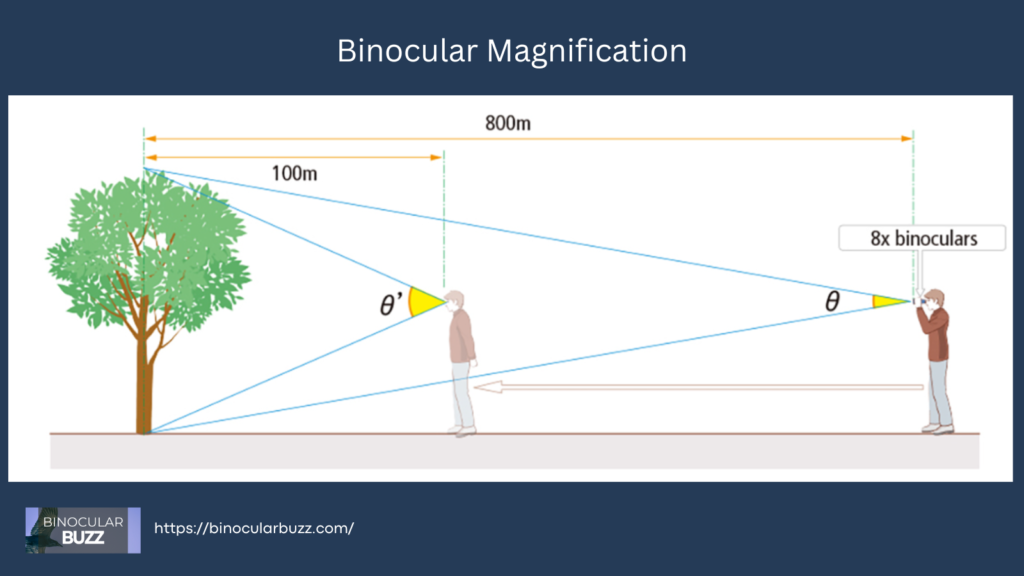
Image Courtesy NIKON
Importance of Binocular Magnification
Binocular magnification is the primary reason you use binoculars for bird watching. It is a way to get visually close to a bird, without getting physically close to the bird.
In most instances it is either impossible to physically get close to a bird or undesirable to get close to a bird.
As an example, it would be impossible to get physically close to a bird in flight. On the other hand it may be possible to get close to a bird eating from a feeder in your backyard, but it would certainly not be desirable. After all, you want to observe the bird behaving naturally!
It is the magnification power of a binocular that lets you observe every little detail of a bird; subtle markings, plumage patterns, beak shape, behavior patterns, etc. And this is the joy of birding!
Finding the Right Balance
While higher magnification may seem like the obvious choice for bird watching, its not the case. There are other parameters too that influence the overall birding experience. Some of the really important ones are:
Image Quality
Higher magnification enables the observation of finer details that may be invisible to the naked eye, which is particularly useful for precision tasks such as scientific research and cataloging.
However, it can also lead to image degradation, resulting in a loss of sharpness, clarity, and color accuracy. This can, of course, be compensated by better optics, that is using lenses and prisms with high-quality glass and coatings.
Just so you know that, all things being equal, higher magnification can lead to lower image quality.
Field of View
Field of view is the width of the observable area through binoculars from a distance of 1000′. As magnification increases, the field of view typically becomes narrower.
While lower magnification provides a wider field of vision, higher magnification offers finer detail but with a narrower field of view.
Getting the right balance between magnification and field of view depends on the type of bird watching that you want to indulge in.
Lower magnification but wider field of view is ideal for observing birds in flight, while higher magnification and narrower field of view suits detailed observation of birds at a feeder in your backyard.
Image Stability
Higher magnification amplifies even slight hand movements, leading to shaky or blurred images.
Once again choose low to moderate magnification when on the move, say in the field or forest. However, you can go for high magnification if you have the option of mounting your binoculars on a tripod or some other stable support.
Another option is to go for image stabilizing binoculars, but I do not advise that as it adds to the cost significantly. In my opinion it is an overkill feature for binoculars for birding.
Portability
Binoculars with higher magnification and larger objective lens diameter tend to be larger and heavier. Consequently, there’s a trade-off between magnification and portability.
The intended use of the binoculars can help you determine the optimal balance between magnification level, lens diameter, size, weight, and portability.
Tips on Choosing the Best Magnification for Binoculars for Birding
I hope by now I have convinced you that going for a higher binocular magnification alone will not make your bird watching experience more educational or enjoyable.
The best magnification for binoculars for birding will depend on factors, such as the terrain of bird watching, the nature of bird behavior you wish to observe, and the type and size of birds you intend to observe.
Here are my tips for finding the best magnification for binoculars for birding in different scenarios
1. Terrain of Bird Watching
Open Fields or Plains
When observing birds in open fields or wide spaces, such as wetlands or grasslands, a wider field of view helps in spotting birds in their natural habitats.
Binoculars with 7x or 8x magnification provide a wider field of view, allowing you to scan larger areas and locate birds more easily. They are also more forgiving when it comes to hand movements, ensuring a stable image.
Woodlands or Forests
Birds in dense forests and woodlands can be challenging to spot due to the abundance of foliage and limited visibility. consider mid-range magnification binoculars for versatility.
Binoculars with 8x or 10x magnification strike a balance between magnification power and field of view. They provide enough magnification to observe details at a distance while maintaining a wider field of view for locating birds within dense vegetation.
Mountainous or Hilly Regions
For birding in rugged terrain with varying distances, a versatile option is binoculars with moderate magnification is desirable.
Binoculars with 8x or 10x magnification have the right balance between detail and field of view, suitable for observing birds across different elevations.
Coastal Areas and Wetlands
Coastal areas and wetlands offer a unique bird watching experience, with a mix of shorebirds, waterfowl, and other aquatic species.
Binoculars with 8x or 10x magnification work well in coastal areas and wetlands, allowing you to observe birds both on land and in water. The higher magnification helps you spot smaller details from a distance, such as plumage patterns or feeding behaviors.
Urban Bird Watching
Urban environments present their own challenges and opportunities for bird watching enthusiasts.
Binoculars with 7x or 8x magnification are suitable for observing birds in urban settings, where distances are usually shorter. The wider field of view helps you quickly locate and identify birds amidst buildings and other urban structures.
Backyard Bird Watching
Watching birds congregate at feeders that you set up in your backyard can provide hours of fun and relaxation.
Binoculars with 10x or 12x magnification and large objective lenses can give you very detailed views of the birds. You can set it up on a tripod on your porch or near the bedroom window so you can have the joy of bird watching without any stress.
2. Nature of Bird Behavior
Birds in Flight
Are you more interested in observing birds in flight, bird migration or similar bird behavior, where the birds are in motion covering a large span? In such situations, field of view needs to be give preference over magnification power.
Binoculars with 7x or 8x magnification provide a wider field of view, allowing you to scan larger areas and track birds in flight. The magnification is good enough to pick out individual birds but may not be enough to get distinguishing details of each bird.
Stationary or Perching Birds
Or are you the type who likes to study specific birds while they perch on a tree branch, feeding their young or building their nest?
Binoculars with 8x or 10x magnification will be perfect for you. The magnification is high enough for you to see details. As the birds under observation will either be stationary or will have very little movement, the narrower field of view will not be a disadvantage.
If you like watching birds in your backyard from the comfort of your porch or living room, you could even go for binoculars with 12x magnification.
3. Type & Size of Birds
Large Birds
When observing larger birds such as eagles, herons, or waterfowl, low to medium magnification binoculars (7x to 8x) are good enough. They will give you reasonably detailed views of their plumage and features, while being lightweight and easy to carry around.
Small Birds
For smaller species like warblers, finches, or hummingbirds, opt for mid-range magnification binoculars (8x or 10x) to strike a balance between detail and field of view. These enable you to observe intricate markings and behaviors up close without losing sight of the bird if it takes flight.
Bottom Line
Bird watching relies heavily on having suitable binoculars that enhance your experience by providing clarity and detail. When selecting binoculars for bird watching try to find a balance between magnification, field of view, lens size & quality and size & weight.
Magnification: Striking the Right Balance
Magnification is very important for bird watching, but finding the right balance is key. High magnification may result in shaky images due to hand movements. Balancing magnification with field of view is essential for a satisfying experience. Binoculars with 8x or 10x magnification are generally recommended for their versatility.
Field of View: Enveloping the Beauty of Nature
A wider field of view makes spotting and tracking birds easier. Remember, higher magnification often means a narrower field of view. When comparing binoculars, pay attention to the actual field of view measurement, expressed as the width in feet at a distance of 1,000 yards.
Lens Quality: Crisp and Clear Observations
Lens quality significantly impacts image clarity and brightness. Factors to consider include the objective lens diameter, lens coatings, prism type, and brand reputation. Opt for trusted brands like Nikon, Zeiss, Swarovski, or Leica for quality optics.
Weight: Binoculars for Extended Birding Sessions
Size & weight matter, especially during long birding sessions. Heavy binoculars can cause strain, so opt for lightweight ones to ensure comfort. However, balance weight with desired features and lens quality.

